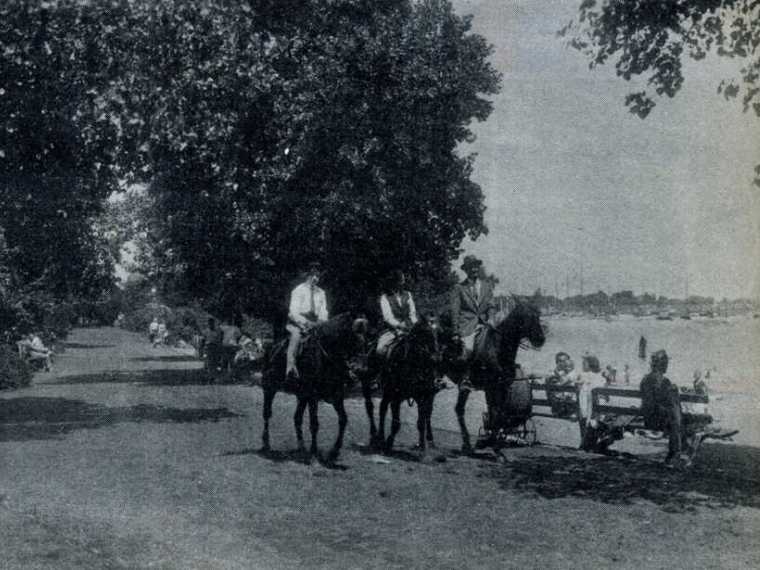A horse was expensive to maintain. It ate as much food as a family of 10 and required feeding, grooming and manure disposal. Thus only the wealthy could afford a horse and buggy for personal transportation. Only the truly wealthy could afford expensive hand-built carriages drawn by teams of two or more. Thus the term “carriage trade,” meaning rich customers.
In 1908, when the City Clerk first counted there were 36,778 one horse vehicles, 16,900 multihorse vehicles and 5,475 automobiles. This was one vehicle per 36 persons. Since most vehicles were used for hauling freight, very few people had personal vehicles.
Livery stables, which were everywhere, rented horses, buggies and wagons and provided other horse-related services such as caring for the horses of businesses and residents.
Pleasure driving on the boulevards was a popular recreation in the late 1800s. The more adventurous raced roadsters (a fast horse with a light carriage.)
Riding saddled horses in places such as Lincoln Park and the South Shore Country Club continued well into the 20th century. By 1960 riding became largely a suburban pursuit.
As related inBloodletters and Badmen, one Lincoln Park horse became the victim of a mob hit in 1923. It threw and killed Samuel “Nails” Morton. A friend went back and shot the horse.
Horse racing was immensely popular during the 1890s in Washington Park. It was banned by the state in 1905. When racing became legal again in 1923, all of the race courses were suburban. City dwellers were not put out. There were excursion trains and bookies.





Add a comment to: Horses for Pleasure: Technology That Changed Chicago